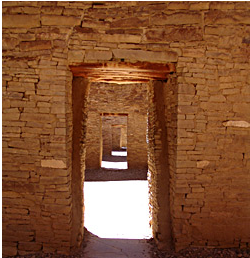Publication Date
5-16-2020
Abstract
The primary purpose of this dissertation was to examine how changes to ecological context can urge subsistence level populations to adopt new subsistence strategies. This was accomplished by using metrics of bone strength to infer temporal behavior change in Holocene (10,000 BP – present) skeletal samples from southern Australia and southern Belize. The first paper, An Examination of the Cross-sectional Geometrical Properties of the Long Bone Diaphyses of Holocene Foragers from Roonka, South Australia, was written in collaboration with Osbjorn Pearson, Arthur Durband, Keryn Walshe, Kristian Carlson, and Frederick Grine. We compared long bone data for 69 individuals at Roonka to samples with a wide range of subsistence strategies to determine how these Aboriginal groups foraged in the arid Lower Murray River Valley of Australia. We found that individuals at Roonka, similar to other groups living in arid environments, were likely highly mobile foragers. They also displayed a sexual division of labor in which males hunted large game and females performed numerous tasks like capturing small game, gathering roots and tubers, and processing nuts and seeds. The second paper, Does Upper Limb Robusticity and Bilateral Asymmetry Support Subsistence Intensification at Roonka, South Australia?, addresses a longstanding debate in Australian archaeology concerning how mid-Holocene climate change altered Aboriginal subsistence strategies. This study – written with Arthur Durband, Osbjorn Pearson, and Keryn Walshe – found that individuals in the Lower Murray River Valley coped with a cooler, drier climate by becoming more risk averse in their foraging strategies rather than intensifying their economy to focus on a small set of low ranking resources. Aboriginals exploited a wide range of foraging patches and food resources to offset environmental unpredictability. Further, this appears to have influenced female strategies more than males, perhaps because their foraging efforts became more important as return rates fell on high ranking large game. The final paper, Behavioral Change and the Transition to Agriculture in the Maya Mountains of Belize, examined patterns in body size and cross-sectional geometrical properties of individuals living in the rockshelter sites of Saki Tzul and Mayahak Cap Pek over the course of the Holocene. We found that while stature remains stable over time, female body mass significantly decreases after then adoption of agriculture. Further, this is paired with a notable decrease in cortical thickness and humerus strength among female farmers while males have high diversity and no observable temporal trend. This may indicate that dietary changes affected women more than men, possibly due to a sexual division of labor in which women carried out the bulk of processing tasks associated with agriculture while males performed a diverse set of activities. This dissertation research adds to the bioarchaeological literature that infers past human behavior that is situated in archaeological evidence. Further, it demonstrates that these analyses are improved by the inclusion of behavioral ecology models, which provides richer bioarchaeological interpretations.
Keywords
cross-sectional geometry, robusticity, bilateral asymmetry, hunter-gatherers, agricultural transition
Document Type
Dissertation
Language
English
Degree Name
Evolutionary Anthropology
Level of Degree
Doctoral
Department Name
Anthropology
First Committee Member (Chair)
Osbjorn M. Pearson
Second Committee Member
Heather H.J. Edgar
Third Committee Member
Keith M. Prufer
Fourth Committee Member
Arthur C. Durband
Recommended Citation
Hill, Ethan C.. "Ecologically Driven Changes in Subsistence Strategies: An Examination of Bone Cross-Sectional Geometrical Properties in Hunter-Gatherers from Australia and Early Agriculturists from Belize." (2020). https://digitalrepository.unm.edu/anth_etds/198

